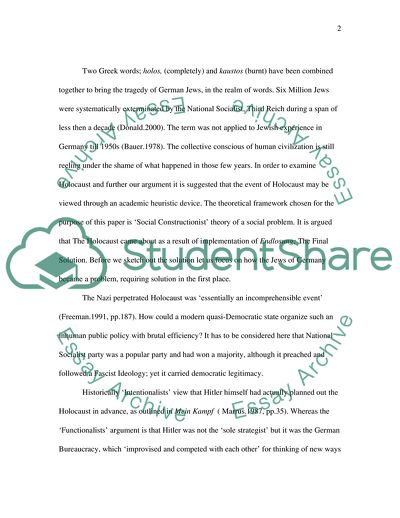Cite this document
(The Definition of Holocaust and Genocide Assignment, n.d.)
The Definition of Holocaust and Genocide Assignment. https://studentshare.org/history/1710587-there-can-be-no-definitive-representation-of-genocide-discuss-this-statement-in-relation-to-two-aspects-of-genocide-as-covered-in-the-course
The Definition of Holocaust and Genocide Assignment. https://studentshare.org/history/1710587-there-can-be-no-definitive-representation-of-genocide-discuss-this-statement-in-relation-to-two-aspects-of-genocide-as-covered-in-the-course
(The Definition of Holocaust and Genocide Assignment)
The Definition of Holocaust and Genocide Assignment. https://studentshare.org/history/1710587-there-can-be-no-definitive-representation-of-genocide-discuss-this-statement-in-relation-to-two-aspects-of-genocide-as-covered-in-the-course.
The Definition of Holocaust and Genocide Assignment. https://studentshare.org/history/1710587-there-can-be-no-definitive-representation-of-genocide-discuss-this-statement-in-relation-to-two-aspects-of-genocide-as-covered-in-the-course.
“The Definition of Holocaust and Genocide Assignment”. https://studentshare.org/history/1710587-there-can-be-no-definitive-representation-of-genocide-discuss-this-statement-in-relation-to-two-aspects-of-genocide-as-covered-in-the-course.


